Lingqu Canal: The Engineering Marvel That Shaped Southern China
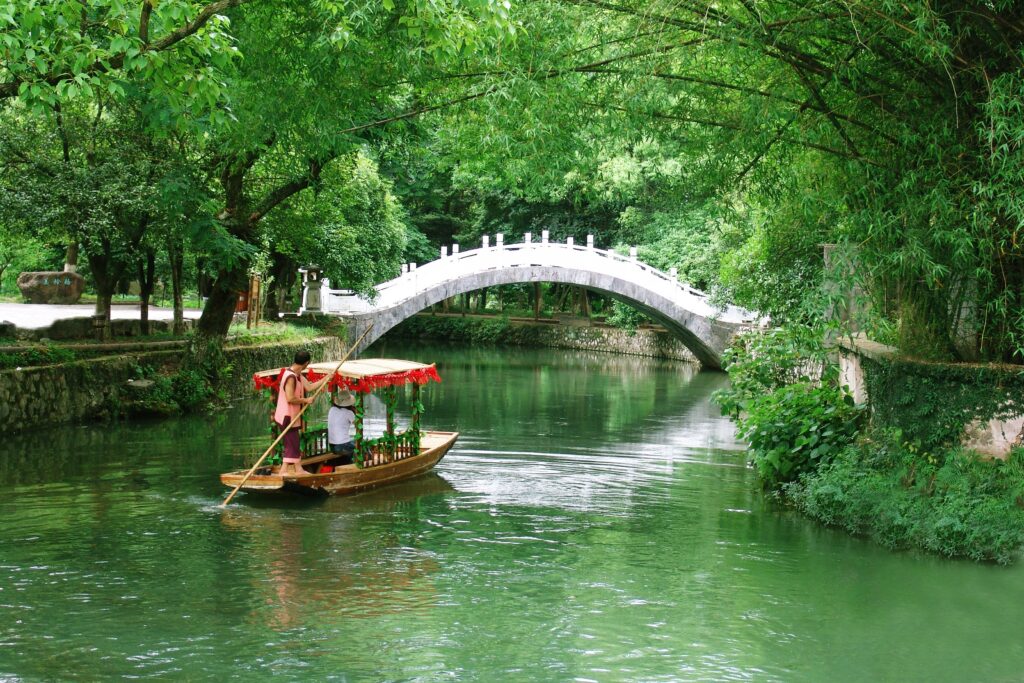
An Essential Guide to Visiting Lingqu Canal
Nestled in the picturesque landscape of Guilin, the Lingqu Canal stands as a testament to ancient engineering brilliance and cultural heritage. This marvel, excavated during the Qin Dynasty over 2,200 years ago, is celebrated as the world’s first contour transport canal, a remarkable feat that not only facilitated military expeditions but also bridged the gap between two major river basins—the Xiang and the Li. Spanning 36.4 kilometers, the canal is adorned with breathtaking scenery, from its crystal-clear waters to the lush karst formations that frame its banks.
As you wander along the canal, you’ll encounter charming traditional pavilions and quaint bridges that whisper tales of history, echoing the lives of those who have depended on this remarkable waterway throughout the centuries. Today, the Lingqu Canal not only captivates visitors with its stunning vistas but also invites you to explore the vibrant culture of the Lingnan region. Whether you’re an avid history enthusiast or simply seeking a serene escape into nature, this ancient canal promises an unforgettable experience steeped in both beauty and significance.
Prepare to embark on a journey where history flows as freely as the waters of the Lingqu Canal, making it a must-see destination for any traveler exploring the enchanting landscapes of China.
In This Guide
- An Essential Guide to Visiting Lingqu Canal
- The Rich History and Legends of Lingqu Canal
- Main Highlights: What You Absolutely Can’t Miss
- Planning Your Visit: A Practical Guide
- Tickets: Prices, Booking, and Tips
- How to Get There: A Complete Transportation Guide
- Local Cuisine and Accommodation Nearby
- Frequently Asked Questions
- Final Thoughts on Your Trip
The Rich History and Legends of Lingqu Canal
The Lingqu Canal, an engineering marvel of ancient China, boasts a rich history that stretches back over two millennia. Constructed during the Qin Dynasty (221-206 BC), this remarkable waterway was commissioned by none other than Qin Shi Huang, the First Emperor of China. His ambitious vision was to create a transport route that would facilitate military campaigns against southern tribes, thus solidifying his control over the newly unified nation.
Spanning 36.4 kilometers, the canal ingeniously connects the Xiang River, a tributary of the Yangtze River, with the Li River in Guilin. This strategic link not only enabled the movement of troops but also fostered trade and cultural exchange between the central plains and southern regions of China. The canal is divided into two main sections: the South Canal, which measures approximately 33.15 kilometers, and the North Canal, which showcases the ingenuity of ancient engineering.
The construction of Lingqu Canal is often celebrated as one of the most complete ancient water conservancy projects in the world. Alongside other significant waterworks from the same era, such as the Dujiangyan Irrigation System and Zhengguo Canal, it exemplifies the prowess of the Qin Dynasty’s engineering capabilities. The canal’s architect, Shi Lu, was instrumental in its design, which included both natural karst formations and manually excavated sections, creating a seamless flow of water that has endured through the ages.
Despite its original military purpose, today’s Lingqu Canal is no longer used as a transport route. Instead, it has become an integral part of the local culture and heritage. Its banks are lined with picturesque scenery, ancient trees, and numerous relics that tell tales of the past. Visitors can stroll along the canal, soaking in the serene beauty that has captivated travelers for centuries. Traditional pavilions and bridges, scattered along the route, stand as reminders of the canal’s rich history and the lives of those who relied upon it.
In recognition of its historical significance, Lingqu Canal was placed on the UNESCO World Heritage Sites tentative list in 2012, underscoring its value not only as a marvel of engineering but also as a cultural treasure. As you wander along its banks, you are walking through a living history that intertwines with the very essence of Chinese civilization, echoing the grandeur of the past while inviting you to appreciate its enduring legacy.
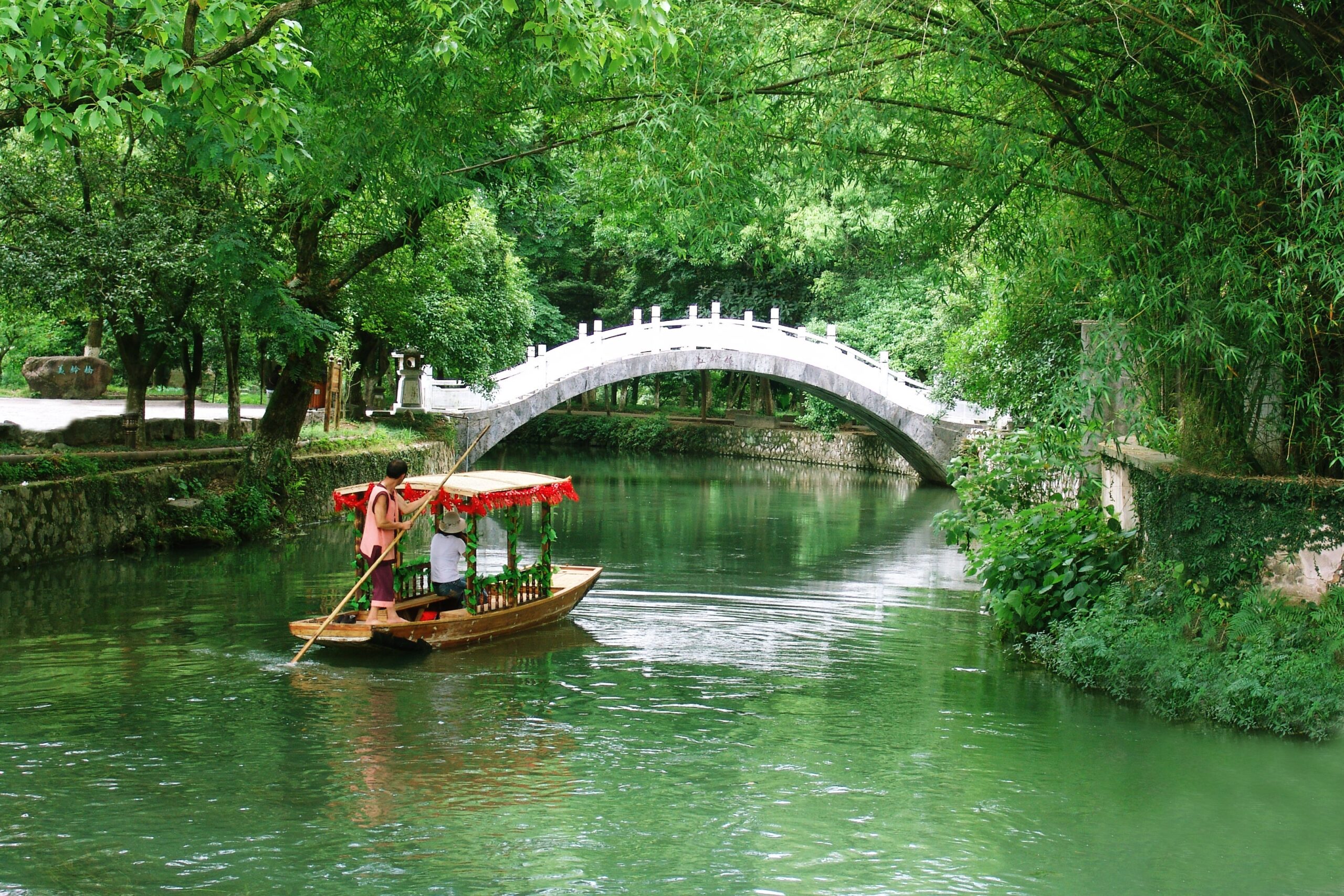
Lingqu Canal.
Main Highlights: What You Absolutely Can’t Miss
Visiting Lingqu Canal is like stepping back in time to an era where engineering marvels were crafted by hand, and nature’s beauty was harmoniously intertwined with human ingenuity. Here are the main highlights that you absolutely cannot miss when exploring this extraordinary site:
1. The Canal Itself
Spanning an impressive 36.4 kilometers, Lingqu Canal is one of the oldest and most significant water conservancy projects in the world. Originally excavated during the Qin Dynasty in 214 BC, the canal showcases remarkable ancient engineering. Take a leisurely stroll along its banks to appreciate the meticulous craftsmanship that has endured for over 2,000 years.
2. Scenic Beauty
The landscape surrounding the canal is breathtaking. Lush greenery, clear waters, and majestic karst formations create a picturesque setting that feels almost untouched by time. Look for the traditional pavilions and bridges that dot the landscape, each telling a story of the canal’s rich history. These structures not only enhance the scenic beauty but also provide perfect photo opportunities.
3. Cultural Heritage
Lingqu Canal is not just about natural beauty; it is steeped in cultural significance. As you walk along the canal, take time to explore the various cultural relics and historic sites that reflect the lives of the local people throughout the centuries. The area is a living museum, showcasing the fusion of ancient and contemporary cultures, particularly through its architecture.
4. Xing’an Waterway
Adjacent to the canal, the Xing’an Waterway is a charming commercial street that offers a glimpse into local life. This free attraction features ancient buildings, stone carvings, and traditional architecture that speak to the Lingnan culture. Enjoy wandering through this lively area where you can shop for local crafts and sample delicious regional food.
5. Pavilions and Bridges
Don’t miss the beautifully preserved pavilions and bridges that line the canal. These structures are not only aesthetically pleasing but also historically significant. Each pavilion and bridge has its own unique story, often linked to local legends and historical events. Make sure to spend some time relaxing in these serene spots, soaking in the atmosphere.
6. The Historical Context
Understanding the historical importance of Lingqu Canal adds depth to your visit. Originally constructed to facilitate military expeditions by the First Emperor of the Qin Dynasty, it played a crucial role in unifying China. As you explore, reflect on the strategic importance of the canal and its lasting impact on the region.
7. Guided Tours and Activities
For a more immersive experience, consider joining a guided tour that can provide deeper insights into the canal’s history and significance. Many tours also include activities such as boat rides on the canal, which allow you to appreciate its beauty from a different perspective.
8. Ideal Visiting Seasons
To make the most of your trip, plan your visit during the spring, summer, or autumn months, particularly from April to October. The weather is typically pleasant, allowing you to fully enjoy the outdoor scenery and activities without the hindrance of extreme temperatures.
9. Ticket Information
Entry to Lingqu Canal is reasonably priced at CNY 55. This small fee contributes to the preservation of this ancient site, ensuring that future generations can also experience its wonders.
10. Accessibility
Located in Xing’an County, south of Guilin, Lingqu Canal is easily accessible from the city. Whether you choose to travel independently or as part of a guided tour, the journey to this historical treasure is well worth your time.
In summary, Lingqu Canal is a captivating blend of natural beauty, rich history, and cultural significance. Whether you’re an avid historian, a nature lover, or simply in search of a unique travel experience, this remarkable site promises to leave a lasting impression.
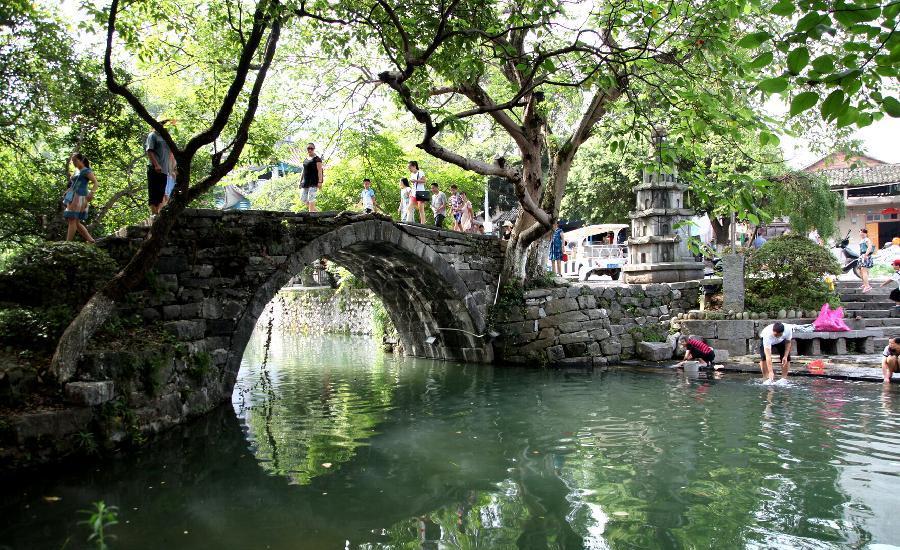
Lingqu Canal.
Planning Your Visit: A Practical Guide
Planning Your Visit to Lingqu Canal: A Practical Guide
Visiting the Lingqu Canal, known as the world’s first contour transport canal, is a captivating journey through history and nature. Nestled in the picturesque region of Guilin, this ancient engineering marvel offers a blend of stunning landscapes and rich cultural heritage. Here’s everything you need to know to make the most of your visit.
Getting There
Location:
Lingqu Canal is located in Xing’an County, approximately 36 kilometers southwest of Guilin city.
Transportation Options:
– By Car: The most convenient way to reach Lingqu Canal is by renting a car or taking a taxi from Guilin. The drive takes about 40 minutes.
– By Public Transport: You can also take a local bus from Guilin to Xing’an County, followed by a short taxi ride to the canal entrance.
Best Time to Visit
Seasons:
The ideal time to visit Lingqu Canal is during spring, summer, and autumn, particularly from April to October. During these months, the weather is pleasant, and the scenery is at its most vibrant.
Opening Hours:
The canal is open daily from 8:30 AM to 5:30 PM, giving you ample time to explore its beauty.
Admission
Ticket Price:
The entrance fee to Lingqu Canal is CNY 55 (approximately USD 8), which grants you access to the scenic areas and historical sites along the canal.
Exploring Lingqu Canal
Recommended Duration:
Plan to spend 1-3 hours exploring Lingqu Canal. This will give you enough time to stroll along the banks, take in the scenic views, and appreciate the historical significance of the area.
Activities:
– Wander Along the Canal: Enjoy a leisurely walk along the waterway, soaking in the natural beauty and tranquility. The clear waters are framed by ancient trees and dotted with traditional pavilions and bridges.
– Visit Xing’an Waterway: This vibrant commercial street runs parallel to the canal. Here, you can explore ancient architecture, sample local delicacies, and purchase handcrafted souvenirs.
– Photography Opportunities: Don’t forget your camera! The picturesque landscapes of Lingqu Canal make for incredible photo opportunities, especially during sunrise and sunset.
Tips for Your Visit
- Dress Comfortably: Wear comfortable shoes suitable for walking, as you’ll want to explore the canal and surrounding areas extensively.
- Stay Hydrated: Bring water, especially during the warmer months, to stay hydrated while you enjoy your exploration.
- Local Cuisine: Consider trying local dishes at nearby restaurants or food stalls along Xing’an Waterway to get a taste of the region’s culinary offerings.
Nearby Attractions
While visiting Lingqu Canal, take the opportunity to explore other nearby attractions:
– Guilin City: Famous for its karst landscapes and vibrant culture, Guilin is filled with scenic spots such as Elephant Trunk Hill and the Reed Flute Cave.
– Li River: A cruise on the Li River is a must-do, offering stunning views of limestone peaks and lush green landscapes.
Additional Resources
For tailored travel experiences and guided tours, consider checking out various tour packages available for Guilin and its surroundings. Many operators offer customizable itineraries that include Lingqu Canal along with other popular attractions.
Contact Information
Should you have any inquiries or require assistance, feel free to reach out to local tour operators or visit the official tourism website for Guilin.
Whether you’re a history enthusiast, a nature lover, or simply seeking a serene escape, Lingqu Canal promises an unforgettable experience steeped in beauty and heritage. Enjoy your visit!
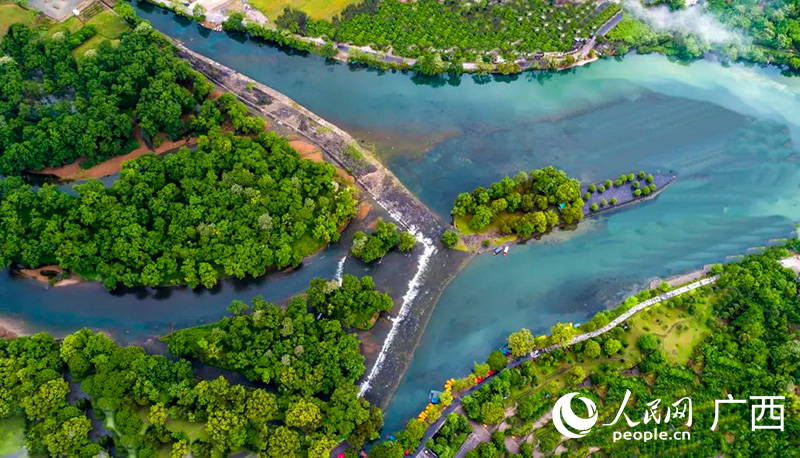
Lingqu Canal.
Tickets: Prices, Booking, and Tips
When planning your visit to Lingqu Canal, known as the world’s first contour transport canal, knowing the ticket information and booking tips will enhance your experience.
Ticket Information
- Price: Admission to Lingqu Canal is reasonably priced at CNY 55 (approximately $8). This fee grants you access to explore the scenic beauty and historical significance of the canal.
- Opening Hours: The canal is open daily from 8:30 AM to 5:30 PM. It’s advisable to arrive early to enjoy a more tranquil visit, especially if you want to take in the serene views without the crowds.
Booking Tips
- Advance Purchase: While tickets can typically be purchased on-site, securing your tickets in advance can save you time, especially during peak tourist seasons (spring and autumn). Look for reputable travel agencies or online platforms that offer ticket reservations.
- Tailor-Made Tours: Consider booking a tour package that includes a visit to Lingqu Canal along with other attractions in Guilin. This can provide a more comprehensive experience and often includes transportation and guided services.
- Check Refund Policies: If you book in advance, be sure to check the refund policy. Many travel agencies offer refundable options in case your plans change.
Additional Tips
- Explore Nearby Attractions: Make the most of your visit by exploring the surrounding areas, including the picturesque Xing’an Waterway, a free attraction featuring ancient architecture and local culture.
- Best Time to Visit: To fully appreciate the canal’s beauty, plan your visit between April to October when the weather is pleasant and the scenery is at its most vibrant.
With these insights, you can enhance your visit to Lingqu Canal, soaking in the rich history and stunning landscapes that this ancient marvel has to offer.
How to Get There: A Complete Transportation Guide
Reaching Lingqu Canal, an ancient marvel nestled in the lush landscape of Guilin, is an adventure in itself. This UNESCO World Heritage Site is accessible through a variety of transportation options, ensuring that international travelers can comfortably make their way to this historical gem. Here’s how to get there:
By Air
The nearest major airport to Lingqu Canal is Guilin Liangjiang International Airport (KWL). It serves both domestic and international flights, providing good connectivity with major cities across China and some international destinations.
- From the Airport to Guilin City:
- Taxi: The most convenient option is to take a taxi from the airport to Guilin city center. The journey takes approximately 30-40 minutes and costs around CNY 100-150.
- Airport Shuttle: Alternatively, shuttle buses run from the airport to various points in Guilin. This is a budget-friendly option but may take longer.
By Train
Guilin is well-connected by rail, making it easy to arrive from other major cities:
- From Guangzhou, Nanning, or other cities: Take a high-speed train to Guilin North Railway Station. The trip from Guangzhou takes about 2-3 hours, while from Nanning, it’s around 2 hours.
- From Guilin Railway Station to Lingqu Canal:
- Taxi: Take a taxi from either railway station directly to Lingqu Canal. The drive will take approximately 1-1.5 hours and costs around CNY 150-200.
- Public Bus: If you’re looking for a more economical option, catch a bus to Xing’an County from either railway station. The bus ride will take about 1.5-2 hours.
By Bus
For those already in Guilin or nearby, buses offer a direct route to Lingqu Canal:
- From Guilin City: Buses to Xing’an County leave from the Guilin Bus Station (located near the city center). The journey takes about 1-1.5 hours, and tickets cost around CNY 20-30.
- To Lingqu Canal: Once in Xing’an, you can take a local taxi or a shared minibus directly to the Lingqu Canal entrance.
Local Transportation
Once you arrive in the vicinity of Lingqu Canal, navigating the local area is straightforward:
- Walking: The canal is designed for exploration on foot. Stroll along its banks to appreciate the stunning views and historical structures.
- Bicycles: Rent a bicycle in Xing’an to enjoy a leisurely ride along the canal and its surroundings.
Tips for Your Visit
- Best Time to Visit: The ideal months to explore Lingqu Canal are from April to October, when the weather is pleasant and the scenery is at its most vibrant.
- Opening Hours: The canal is open daily from 8:30 AM to 5:30 PM. Plan your visit accordingly to maximize your exploration time.
- Tickets: Entry to the canal costs CNY 55, which is quite reasonable considering the historical significance and natural beauty of the area.
With these transportation options, reaching Lingqu Canal is a breeze, allowing you to immerse yourself in the rich history and breathtaking scenery that this ancient waterway has to offer. Enjoy your journey!
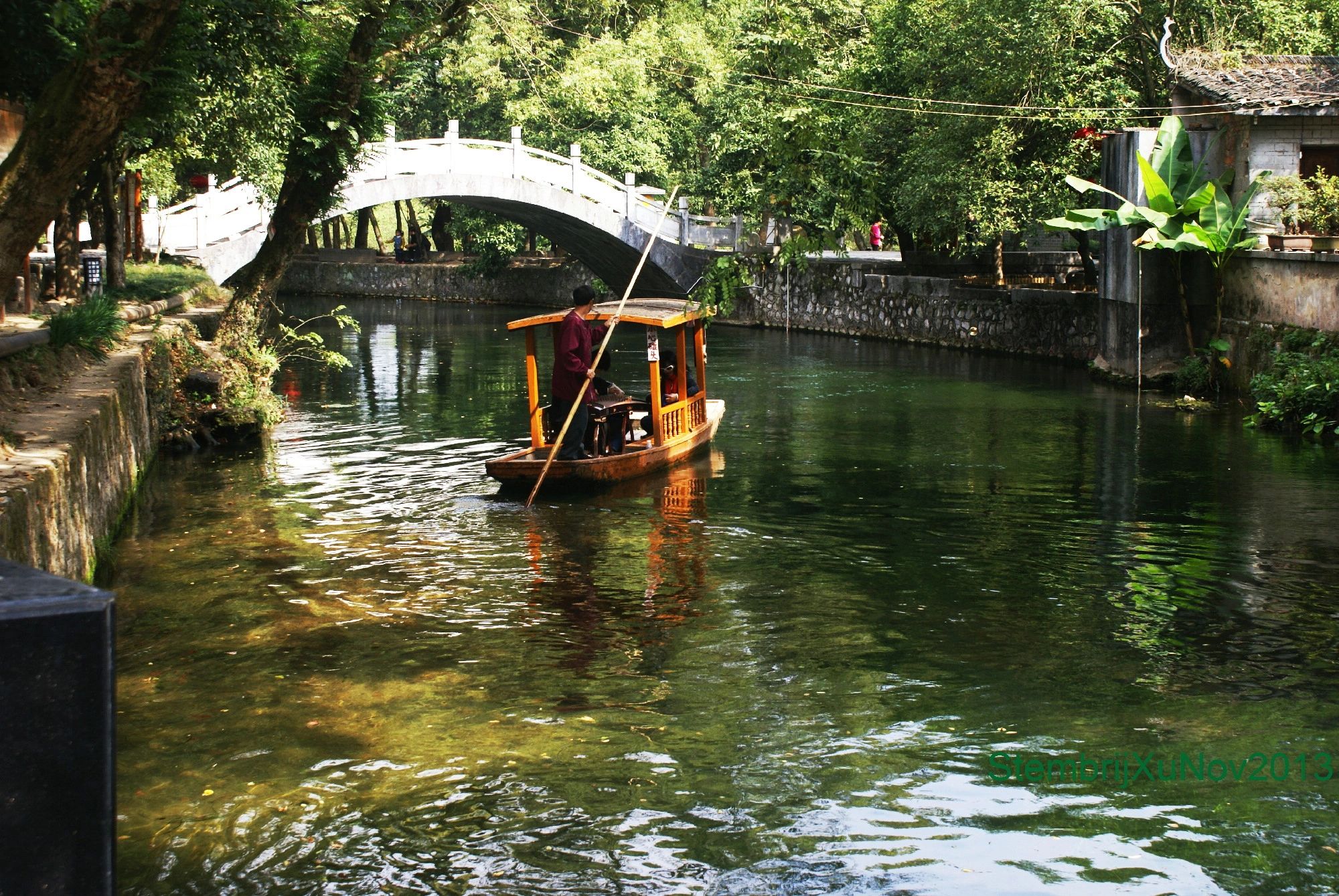
Lingqu Canal.
Local Cuisine and Accommodation Nearby
When visiting the magnificent Lingqu Canal, indulging in the local cuisine and finding the perfect place to stay can greatly enhance your experience. Here are some delightful food and accommodation options that will allow you to fully immerse yourself in the culture and charm of the region.
Local Cuisine
1. Xing’an Rice Noodles (兴安米粉)
Renowned for its unique flavor, Xing’an rice noodles are a must-try when in the area. These silky noodles are typically served in a savory broth and topped with fresh herbs, meats, and vegetables. You can find local eateries along the Xing’an Waterway that serve this dish, allowing you to enjoy it while taking in the picturesque views of the canal.
2. Li River Fish (漓江鱼)
Sourced directly from the nearby Li River, the fish here is fresh and often prepared in a way that highlights its delicate flavor. Restaurants near the canal feature various cooking styles, including steaming and grilling, often served with local herbs and spices. Don’t miss the opportunity to savor this regional delicacy.
3. Sour Bamboo Shoots (酸笋)
A popular side dish in Guangxi cuisine, sour bamboo shoots offer a crunchy texture and a tangy flavor that complements many main courses. Look for local restaurants that serve traditional dishes featuring this ingredient, as it’s often paired with meats or stir-fried vegetables.
4. Guilin Chili Sauce (桂林辣椒酱)
No meal in this area is complete without a dollop of Guilin chili sauce. This spicy condiment is made from locally sourced ingredients and adds a delightful kick to any dish. It’s commonly found on dining tables in local restaurants, and you can even purchase jars to take home as a souvenir.
Accommodation Nearby
1. Xing’an Hotel (兴安大酒店)
Located conveniently close to Lingqu Canal, Xing’an Hotel offers comfortable accommodations with modern amenities. The hotel features both Western and local dining options, making it an excellent choice for travelers seeking convenience and comfort after a day of exploring.
2. Guilin Yangshuo Mountain Retreat (阳朔山水人家)
For those looking to enjoy a more rustic experience, this retreat is situated in a serene environment just a short drive from Lingqu Canal. Surrounded by nature, guests can enjoy beautifully designed rooms and traditional meals made from locally sourced ingredients.
3. Lijiang Hotel (丽江酒店)
This hotel is known for its excellent service and cozy atmosphere. It’s located within walking distance of the Xing’an Waterway, providing easy access to local eateries and attractions. Enjoy a peaceful night’s sleep in well-appointed rooms, some of which offer stunning views of the surrounding landscape.
4. The Tea House Inn (茶馆客栈)
Experience authentic Chinese hospitality at this charming inn. With its traditional decor and warm ambiance, The Tea House Inn offers a unique stay. Guests can enjoy homemade meals featuring local ingredients and partake in tea ceremonies, enhancing their cultural experience.
Exploring the Lingqu Canal is not just a journey through history; it’s also a delightful culinary adventure. Pair your sightseeing with these local flavors and comfortable stays to create lasting memories during your visit.
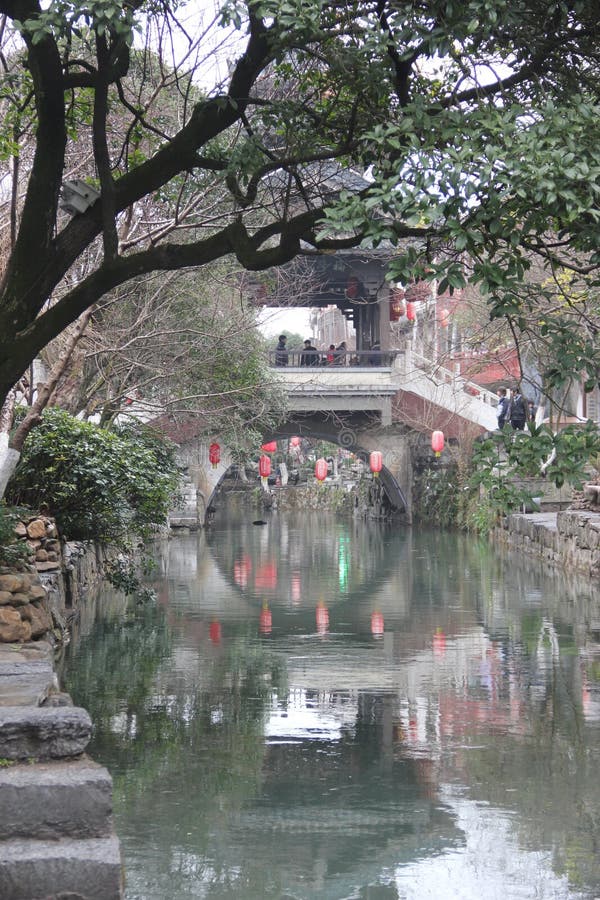
Lingqu Canal.
Frequently Asked Questions
Frequently Asked Questions about Lingqu Canal
1. What is the best time to visit Lingqu Canal?
The ideal time to visit Lingqu Canal is during spring, summer, and autumn, particularly from April to October. During these months, the weather is pleasant, allowing for a more enjoyable exploration of the scenic surroundings.
2. How long does it typically take to visit Lingqu Canal?
Most visitors find that spending 1 to 3 hours at Lingqu Canal is sufficient. This allows ample time to wander along the banks, appreciate the natural beauty, and explore the historical significance of the site.
3. Are there any entry fees for visiting Lingqu Canal?
Yes, there is an entrance fee of CNY 55 (approximately $8) to access Lingqu Canal. This fee helps maintain the site and its facilities for visitors.
4. What are the opening hours for Lingqu Canal?
Lingqu Canal is open daily from 8:30 AM to 5:30 PM. It’s advisable to plan your visit accordingly to make the most of your time there.
5. Can I explore Lingqu Canal independently, or are guided tours available?
Visitors can certainly explore Lingqu Canal independently. However, guided tours are available for those who prefer a more informative experience, providing insights into the canal’s rich history and cultural significance.
6. Is there parking available near Lingqu Canal?
Yes, there is parking available for visitors traveling by car. However, it can be limited during peak tourist seasons, so arriving early is recommended.
7. What attractions or activities are nearby Lingqu Canal?
Adjacent to Lingqu Canal, you can find the Xing’an Waterway, a free attraction featuring ancient architecture, bridges, and local markets. This area provides a great opportunity to delve into the local culture and history of the Lingnan region.
8. Are there any facilities available for visitors at Lingqu Canal?
Facilities at Lingqu Canal include restrooms and areas for resting. While there are no extensive dining options on-site, nearby commercial areas may offer local snacks and refreshments. It’s advisable to bring water and snacks if you plan to spend several hours exploring.
Final Thoughts on Your Trip
As your journey comes to a close, take a moment to reflect on the remarkable history and breathtaking beauty that Lingqu Canal has to offer. This ancient waterway, carved out over two millennia ago, is not just a marvel of engineering; it is a testament to the ingenuity and determination of the Qin dynasty. Walking along its banks, surrounded by lush landscapes and the whispers of history, you can almost hear the echoes of the past—stories of soldiers transported to conquer new lands, and of local lives intertwined with this vital artery of water.
Whether you found joy in the serene beauty of the canal’s natural surroundings, explored the charming Xing’an Waterway, or marveled at the intricate pavilions that tell tales of times gone by, Lingqu Canal invites you to appreciate the harmony between nature and human endeavor. As you prepare to depart from this enchanting place, carry with you the spirit of adventure and the rich cultural legacy that defines this region of China.
Lingqu Canal awaits your return, always ready to share its stories with those willing to listen. Safe travels, and may your next adventure be as inspiring as the journey you’ve just completed!